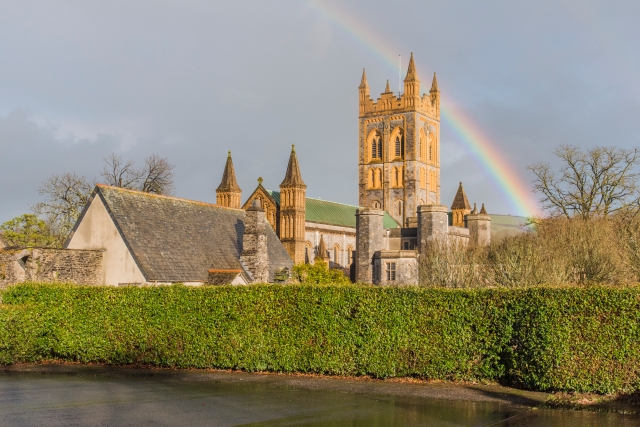A meeting recently took me to Buckfast Abbey, a first visit. This is a Benedictine Abbey in the heart of rural Devon. It was a midwinter day of strong sunshine and stronger showers, which allowed for some dramatic photography.
Dating back to late Saxon times, Buckfast Abbey was suppressed by Henry VIII in 1539 (frankly, it was already quite decayed and the remaining monks accepted generous payments to repudiate their sacred vows and go quietly). In the early 1800s, almost all the buildings were demolished by a local landowner to make way for a large house. In 1882, some French Benedictines returned to re-establish a community there, which survives to this day.
They immediately built a temporary chapel (the grey buildings on the right) before the current main Abbey church was built, to a design by Frank Walters, from 1906-32, with the tower completed in 1938.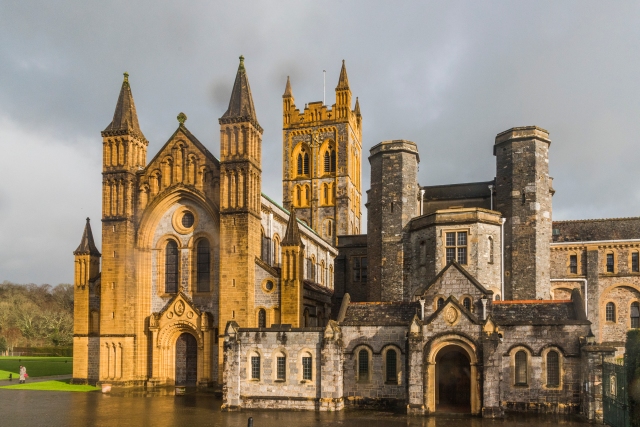
For me, the crowning glory is Dom Charles Norris’ stunning 1968 east window of Christ at the Last Supper in the 1965 Blessed Sacrament Chapel at Buckfast Abbey. Modernist and depicting a definitely post-Vatican II vision of Catholicism. Thick tiles of glass, chipped to shape and set in concrete or epoxy resin.
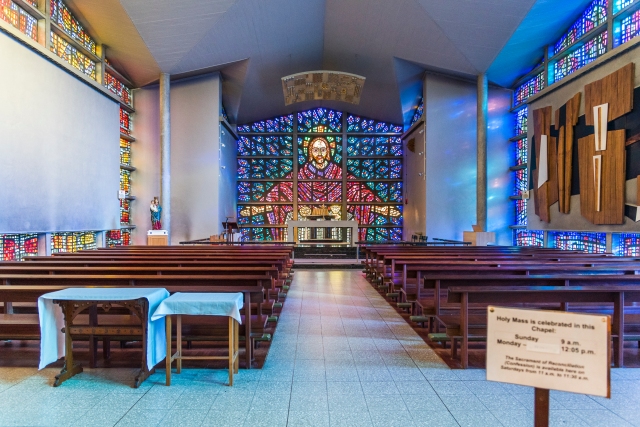
And here’s a close-up of the window, Christ at the Last Supper.
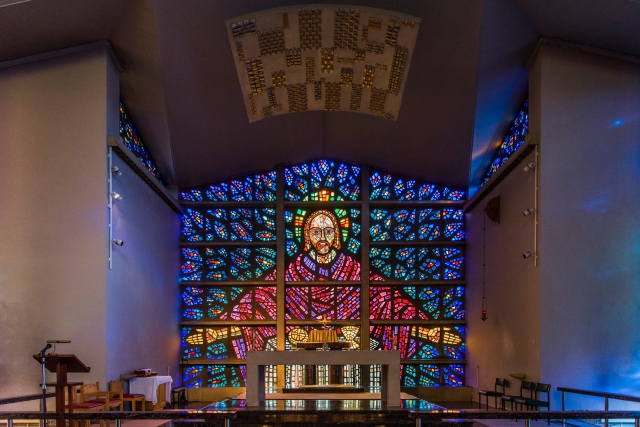 Here’s another example of Norris’ work, the decorated ceiling of the tower, with Christ surrounded by the Church Triumphant: the four evangelists, with Old Testament prophets, martyrs, and doctors of the Church.
Here’s another example of Norris’ work, the decorated ceiling of the tower, with Christ surrounded by the Church Triumphant: the four evangelists, with Old Testament prophets, martyrs, and doctors of the Church.
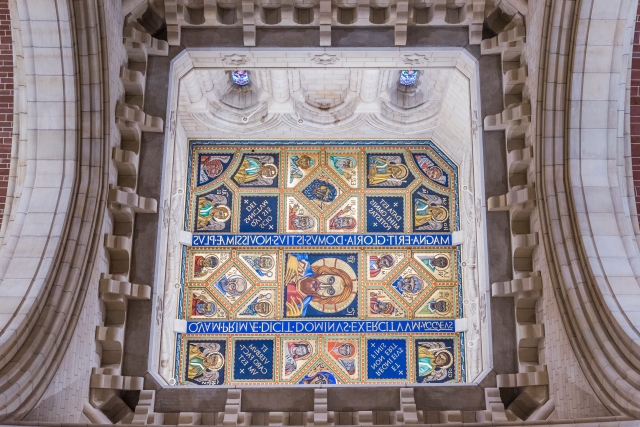
The weather saw some strong rainbows appear and disappear in minutes.
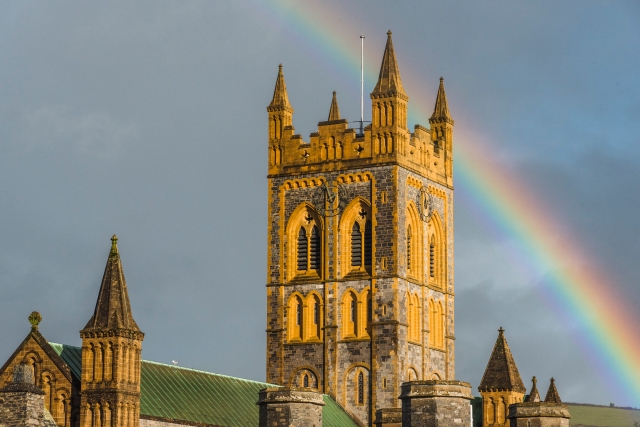
Another key figure in the Abbey’s construction was German metalworker Gerhard Witte, who produced this fine font, said to be one of only two in bronze in England. The baptismal font is a replica of the masterpiece in Hildesheim Cathedral in Germany. The figures on the side of the font, modelled in haut relief, give a graphical account of the doctrine of Christian Baptism – for example, the Israelites passing through the Red Sea, and the baptism of Christ in the River Jordan.
At the base of the font, there are four kneeling figures. These figures are the symbols of the four great rivers of paradise, Gihon, Tigris, Phison and Euphrates. The font weighs 317 kg. The heavy cover is raised by means of a system of counterweights above the ceiling. Sorry if this has a teeny bit of shake – 1/8 without a tripod, what can I say!
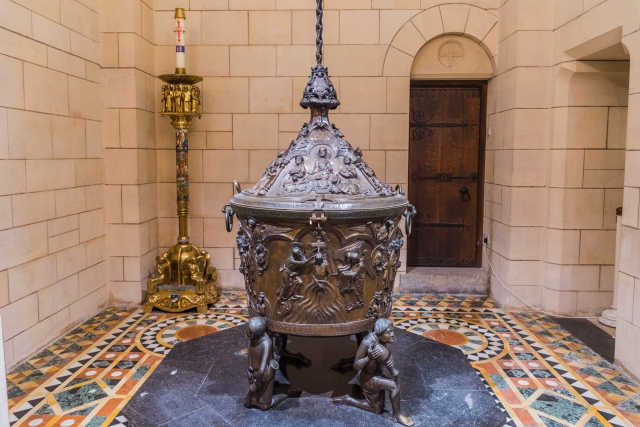
The High Altar has magnificent goldworking by Witte, presumably done in 1928-32. The twelve apostles are gathered below Christ, while golden angels look down on the scene.
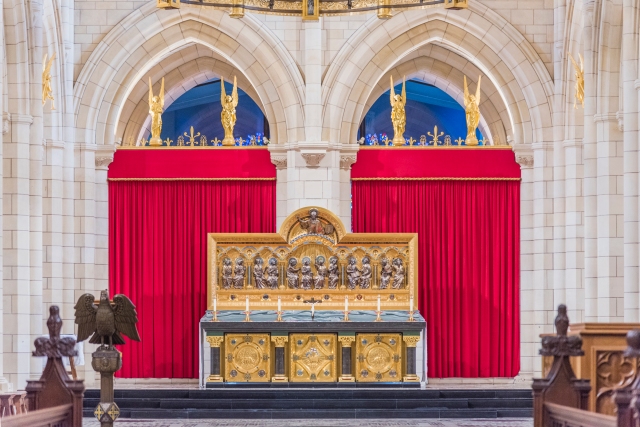
I presume this side altar, at the East End of Buckfast Abbey, was where the Blessed Sacrament was reserved before the 1968 opening of the chapel, whose stained glass can just be seen on the right. I would further presume the magnificent gold working was done by Bernhard Witte sometime in 1928-32.
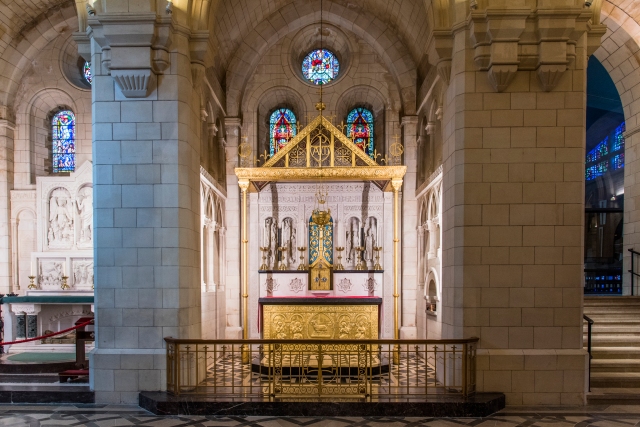
Here’s a view down the length of the nave of the Abbey from the West End, towards the High Altar, Norman and Romanesque elements fusing as reimagined in the early 20th Century.
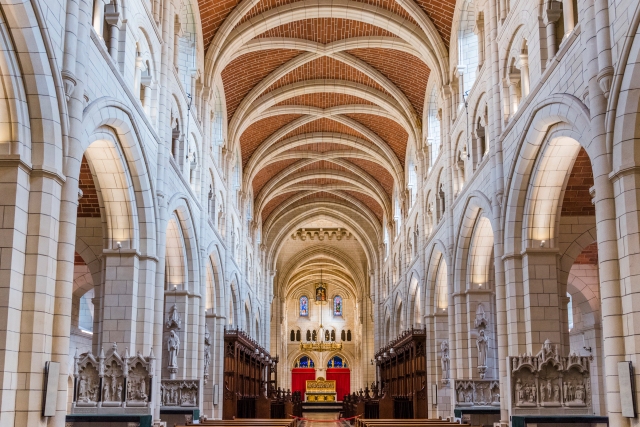
There continues to be new construction on the Abbey grounds. The Higher Mill at Buckfast Abbey is a rare surviving remnant of Devon’s wool industry. The buildings, renovated in 2016, are now used for an Abbey shop as well as offices for various organisations. The waterwheel is a working hydroelectric plant, generating 6-8 kW.
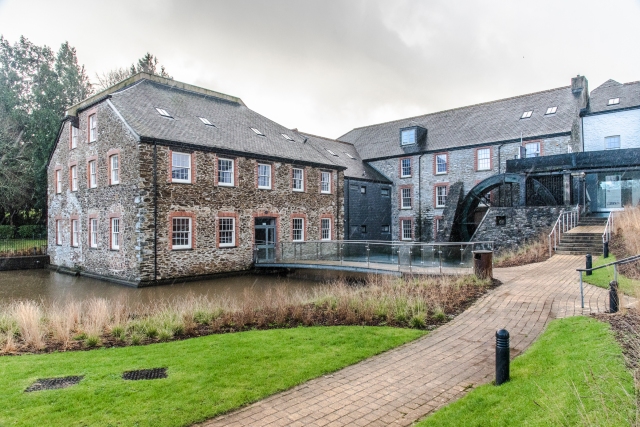
The Lady Chapel in the north east corner of Buckfast Abbey, dedicated to Our Lady of Buckfast. Floor laid 1958. The part of the statue below the knee is medieval and was found in a wall near the Abbey when the rebuilding began.
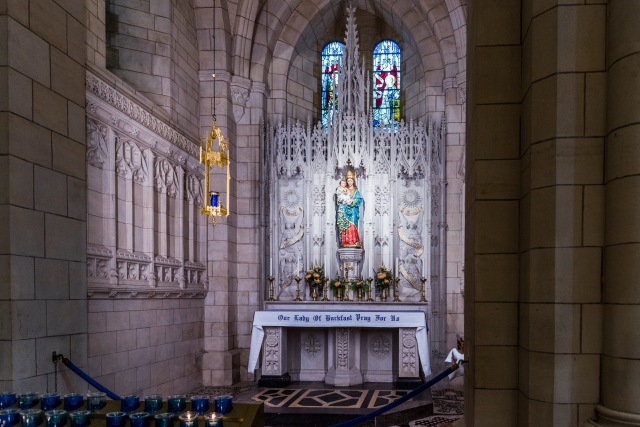
Especially for Church Unity week: Buckfast Methodist Church is overlooked by the Benedictine Abbey, in whose grounds it sits. The Chapel was built in 1881, on what was then the main street in Buckfastleigh, just one year before monks returned to the Abbey.
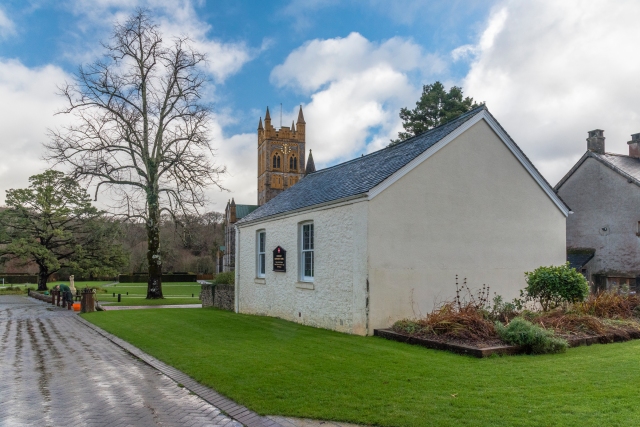
The shifting skies produced some lovely photographs, as here in a North West Elevation.
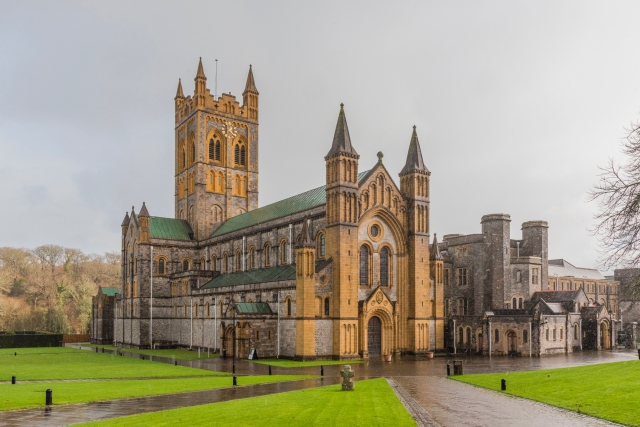
Stone carving over the West Door.
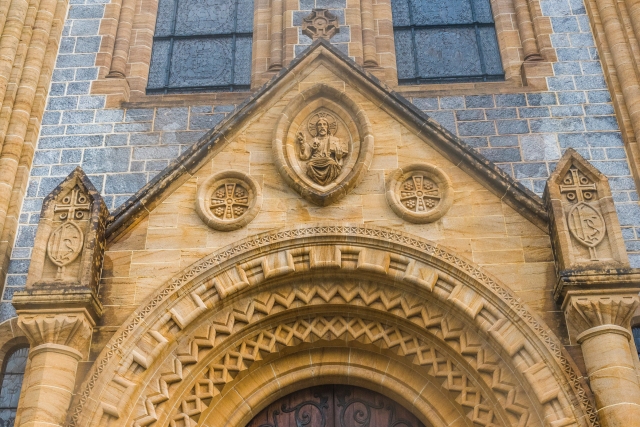
If you’ve scrolled this far, you’ve reached the end of the rainbow!
